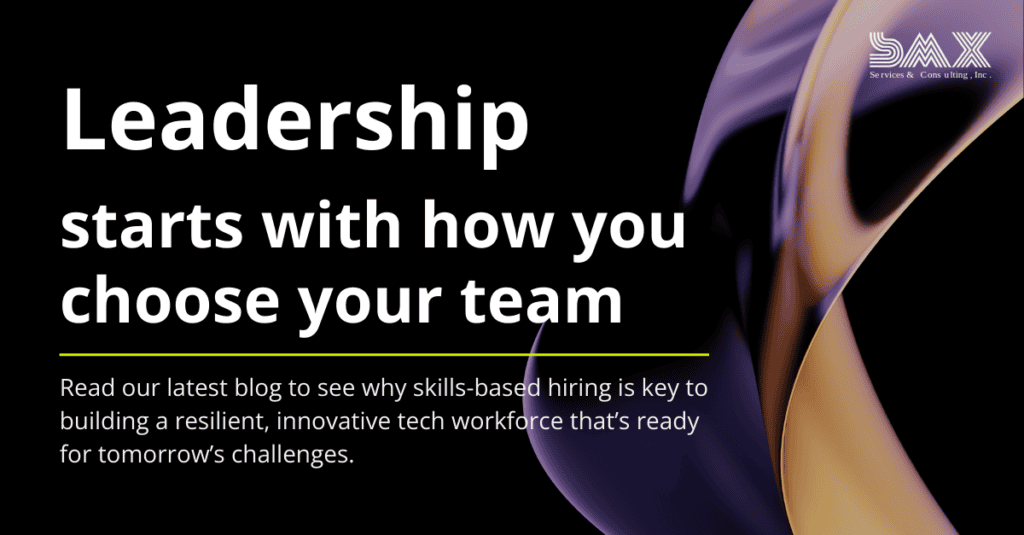
A tale of two approaches: when to lean into traditional vs. skills-based hiring.
Ready to supercharge your hiring strategy? Today’s tech sector moves fast… as should your approach to identifying top talent.
It’s clear: a traditional degree checks a box, but it’s hands-on skills that fuel real innovation and performance. Whether you’re looking to refine your team’s capabilities or aiming to scale new heights, knowing when to rely on traditional hiring and when to shift gears to a skills-first approach isn’t just useful—it’s essential.
Curious about which approach will best suit your needs? Let’s break down the benefits of each and help you build a workforce that’s equipped for today and ready for tomorrow’s challenges.
The duel-edged nature of traditional hiring
Traditional hiring has long been the go-to strategy for determining a candidate’s potential for success. Valued for its structured approach, this hiring method offers employers a certain level of assurance in their hiring decisions based on well-established success metrics.
But this method isn’t foolproof. It tends to overlook individuals whose unconventional educational paths mask their high potential and unique capabilities—especially in tech, where best practices and technologies constantly change.
The ability to adapt and think outside the box is becoming just as important as formal training. Traditional hiring methods might feel like the safe choice, but they often overlook unconventional talent brimming with potential and innovative ideas. By overly relying on established paths, companies risk missing out on the very innovators who drive technological breakthroughs and market leadership.
The rise of skills-based hiring
Where traditional hiring prioritizes degrees and past job titles, skills-based hiring cuts straight to the chase: it’s all about what candidates can accomplish now. This methodology prioritizes a candidate’s practical abilities and how these skills align with the needs of the role. It’s about what candidates can do on day one and beyond, not just their credentials—making it an ideal hiring strategy for industries that evolve at breakneck speed.
At SMX, we’ve embraced this approach to ensure we’re not just filling positions but building powerhouse teams tailored to your specific project needs. Our professional IT workforce solutions are designed to provide the best personnel and teams to drive your projects forward.
Why companies are embracing skills-based hiring
● Speed: By focusing on skills assessments, you can streamline the hiring process, reduce time to fill, and quickly hire those ready to hit the ground running.
● Diversity & Inclusion: Skills-based hiring levels the playing field, giving a fair chance to talented individuals from diverse backgrounds who might otherwise be overlooked.
● Precision Fit: This approach ensures that new hires are immediately capable and productive, having been selected for their proven abilities relevant to specific job challenges.
Interested in learning more about the skills-based approach? Our eBook, “Leveraging Skills-Based Hiring to Amplify IT Initiatives,” is packed with insights and strategies to help you harness the full potential of your workforce in this new era of hiring.
Navigating between traditional and skills-based hiring approaches
Navigating the choice between traditional and skills-based hiring is akin to selecting the right tool for a job—sometimes a screwdriver is best, other times you need a hammer. In the tech industry, this decision isn’t just about filling seats; it’s about propelling forward-thinking innovation and managing rapid technological advancements. Here’s how to discern which approach fits your hiring needs.
Ideal scenarios for traditional hiring
Traditional hiring, with its emphasis on academic credentials and career progress, isn’t obsolete—far from it. It’s particularly effective for:
● Roles requiring deep specialized knowledge: Think of positions where in-depth knowledge accrued from years of focused study is crucial. This includes roles in advanced computing theories or specialized fields like quantum computing.
● Regulatory and compliance-driven positions: In areas where legal and regulatory frameworks dictate specific education standards—such as data privacy or certain cybersecurity roles—traditional credentials are not just beneficial; they’re mandatory.
Ideal scenarios for skills-based hiring
Conversely, skills-based hiring shines in environments where the ability to perform tasks effectively from day one is key:
● Dynamic, fast-changing fields: In domains like software development, UX design, or web development, where technologies evolve faster than educational systems can keep up, the capacity to learn quickly and adapt is more valuable than the pedigree of one’s education.
● Project-based and flexible roles: Startups and tech companies undergoing rapid growth often find that ability and practical skills trump formal education, allowing for faster adaptation and innovation.
Make the smart choice for your hiring strategy
Finding the right hiring strategy for your business requires more than just following trends—it demands a strategic approach tailored to your unique needs. Whether you opt for the proven pathways of traditional hiring or the dynamic potential of skills-based strategies, the ultimate goal is clear: to assemble a team that not only meets today’s demands but is also ready to tackle tomorrow’s challenges.
At SMX, we provide skills-based hiring to give you the right solutions to ensure your teams and projects are successful.
Don’t let your hiring strategy become outdated. Embrace the best of both worlds with our latest eBook, “Leveraging Skills-Based Hiring to Amplify Your IT Initiatives.” Inside, you’ll discover actionable insights that will maximize your IT initiatives and help you stay competitive in this constantly changing landscape. Download it now and start building a workforce that drives your success forward.
This isn’t just about hiring; it’s about future-proofing your business. Make the decision to adapt and thrive—your future leaders are waiting.






